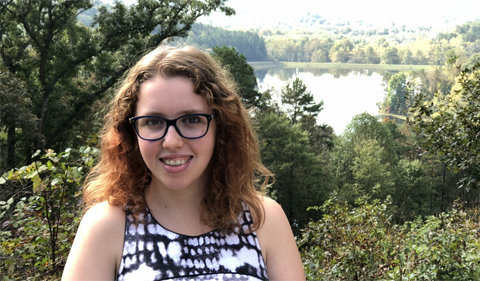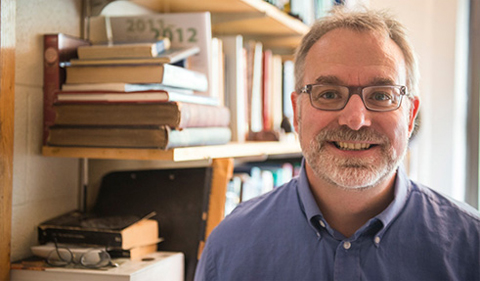By Amanda Biederman
Using a computer model to explain the function of a neuronal cell is no small feat, but that doesn’t stop undergraduate researcher Anika Friedman, who was awarded third prize for her work at Neuroscience Research Day, from taking on the challenge.
Friedman, an Honors Tutorial College student, is completing a joint thesis in neuroscience and physics. She works under the supervision of Physics & Astronomy professor Dr. Peter Jung, who studies biological systems from a physics perspective. For her thesis, Friedman is studying how neurofilaments accumulate within neurons during cell development.
Neurofilaments are small protein polymers that are important for maintaining a neuron’s shape. These filaments are abundant in the axon, an elongated portion of the neuron that is important for signal conduction.
Friedman’s model may help researchers better understand the process of neurofilament accumulation. This is important because it has been shown that neurofilaments tend to accumulate during the progression of neurodegenerative diseases, such as Parkinson’s disease and Amyotrophic Lateral Sclerosis (ALS).
“Right now, we’re trying to figure out normal operation, how neurofilaments would accumulate normally to try and figure out why that goes wrong,” Friedman said. “We want to use this model to make predictions that can be tested experimentally to verify the mechanism.”
Friedman uses coupled partial differentiations to build her model, calculating rate factors to predict how a neurofilament is likely to move along the axon. Although she said computer modeling comes with its own limitations, Friedman said she chose this project because it encompasses two of her passions: biological systems and computation.
“I’d had some computer science background before this, but (while working in Dr. Jung’s lab) I’ve learned how to apply computational modeling to biological organisms,” Friedman said. “I was trying to find something to meld my two majors, and I love the computational aspect.”




















Comments